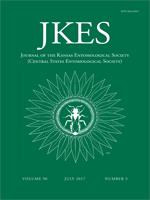Periodical cicadas, known for strict life-cycle lengths of 13 or 17 yr, actually exhibit developmental plasticity in cycle length. This variation tends to occur in 1- and 4-yr increments for both life-cycle types, with the largest events involving 4-yr accelerations of the 17-yr species. The pattern has stimulated hypotheses to explain brood formation and life-cycle evolution, but most of the evidence is anecdotal. We present the first quantitative evidence confirming that a site with a 4-yr acceleration does not necessarily experience comparable emergence in the following year, and we provide the first density estimate for a 4-yr early emergence of 17-yr cicadas (1.28/m2, within the range of published estimates for on-schedule emergences). We also document a 4-yr early 13-yr emergence—cicadas apparently emerging in 9 yr. Multimodal life-cycle patterns spanning −4 to 4 yr are evident in both 13- and 17-yr cicadas.
How to translate text using browser tools
1 July 2017
Multimodal Life-Cycle Variation in 13- and 17-Year Periodical Cicadas (Hemiptera: Cicadidae: Magicicada)
David C. Marshall,
Kathy B. R. Hill,
John R. Cooley
ACCESS THE FULL ARTICLE
Auchenorrhyncha
broods
developmental plasticity
evolution
Magicicada
population density
straggler





